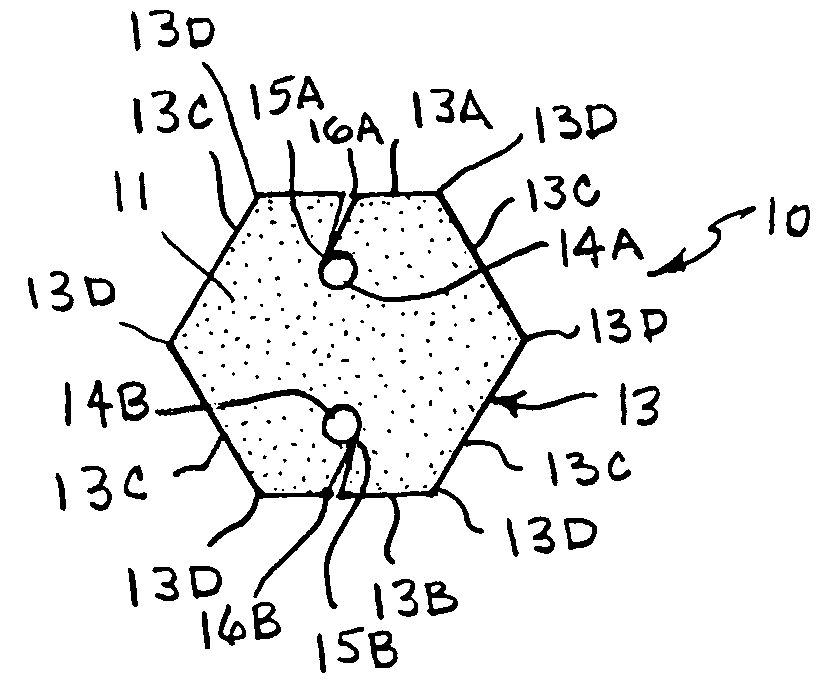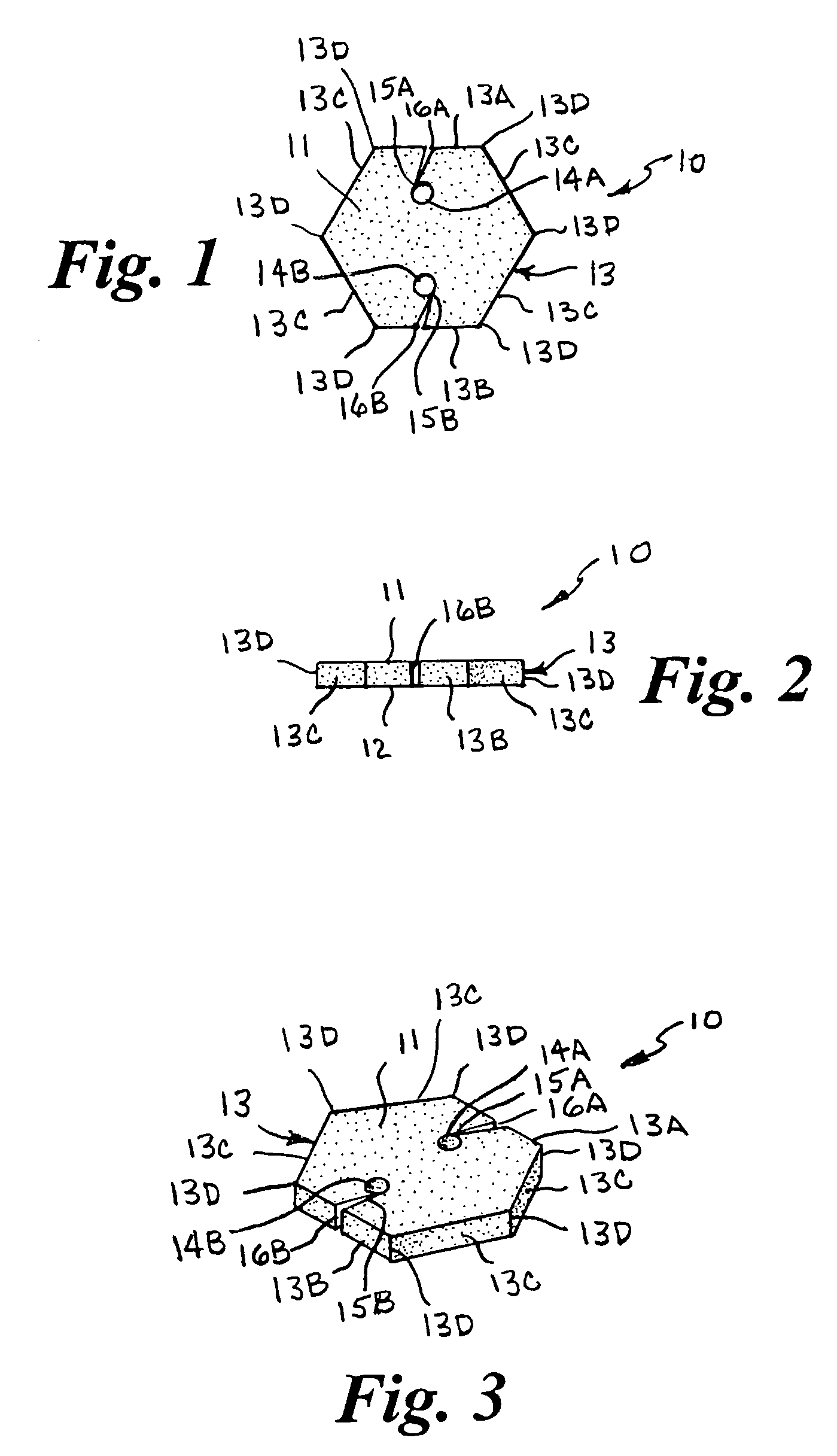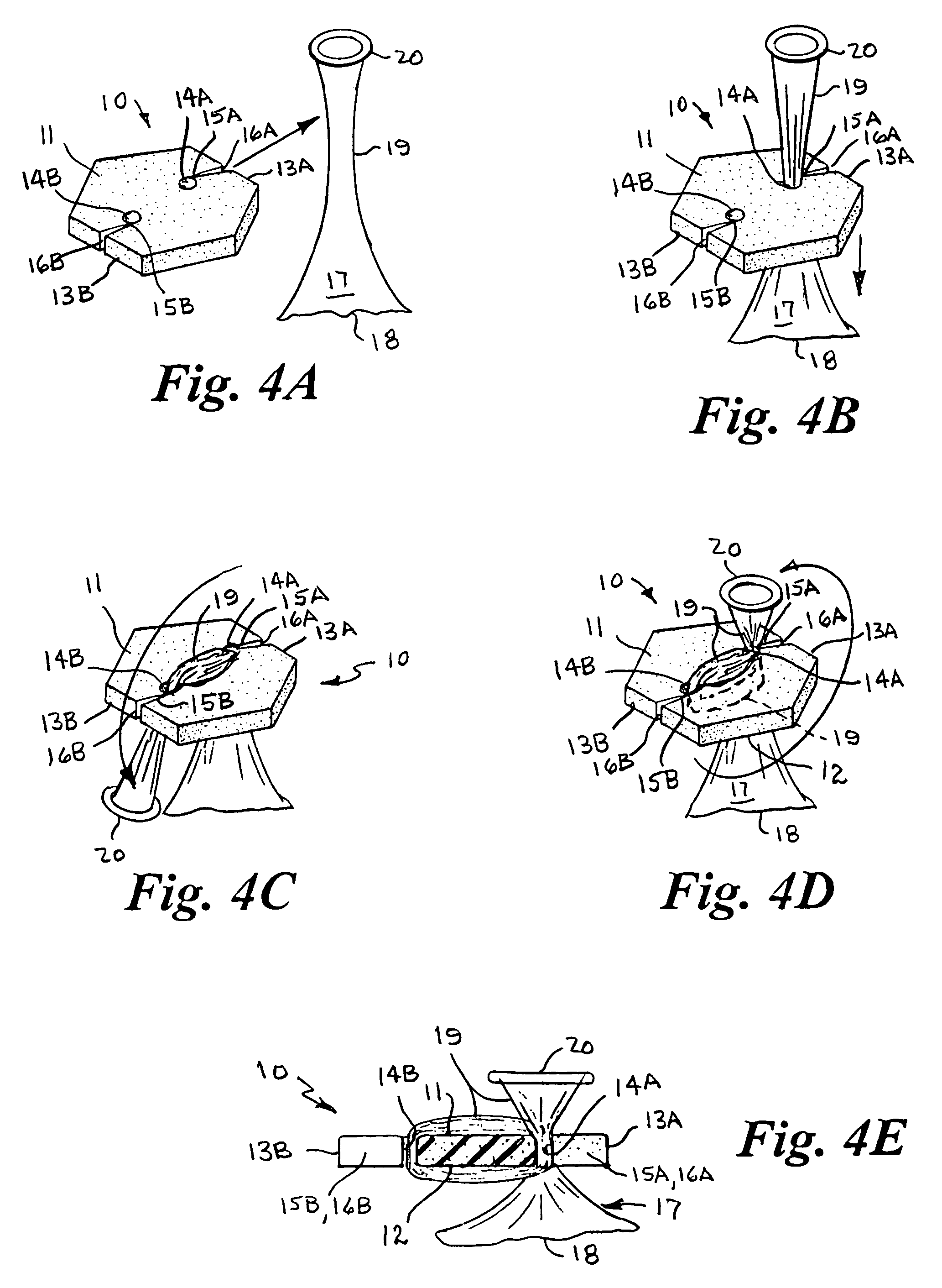Safe balloon neck closure device and method
a neck closure and balloon technology, applied in the field of balloon neck closure devices, can solve the problems of affecting the safety of balloon neck closures, so as to reduce the risk of injury
- Summary
- Abstract
- Description
- Claims
- Application Information
AI Technical Summary
Benefits of technology
Problems solved by technology
Method used
Image
Examples
Embodiment Construction
[0033]Referring to the drawings by numerals of reference, there is shown in FIGS. 1, 2 and 3, a preferred balloon closure device 10. The device 10 is a flat disc-shaped unitary body formed of a non-rigid, soft, flexible and resilient material such as, but not limited to, cellular polyurethane or polyethylene based foam material, or other suitable soft resilient rubber, latex or elastomeric material. The device 10 has a flat top surface11, a flat bottom surface 12, and a peripheral outer surface 13 circumscribing the top and bottom surfaces and defining the shape of the device. In the embodiment of FIGS. 1–3, the peripheral outer surface 13 is in the shape of a hexagon having a first straight side segment 13A and a second straight side segment 13B parallel thereto adjoined by four angular side segments 13C forming diametrically opposed corners 13D.
[0034]A first small hole 14A and a second small hole 14B are formed through the device 10 a short distance inwardly from the first side se...
PUM
 Login to View More
Login to View More Abstract
Description
Claims
Application Information
 Login to View More
Login to View More - R&D Engineer
- R&D Manager
- IP Professional
- Industry Leading Data Capabilities
- Powerful AI technology
- Patent DNA Extraction
Browse by: Latest US Patents, China's latest patents, Technical Efficacy Thesaurus, Application Domain, Technology Topic, Popular Technical Reports.
© 2024 PatSnap. All rights reserved.Legal|Privacy policy|Modern Slavery Act Transparency Statement|Sitemap|About US| Contact US: help@patsnap.com










